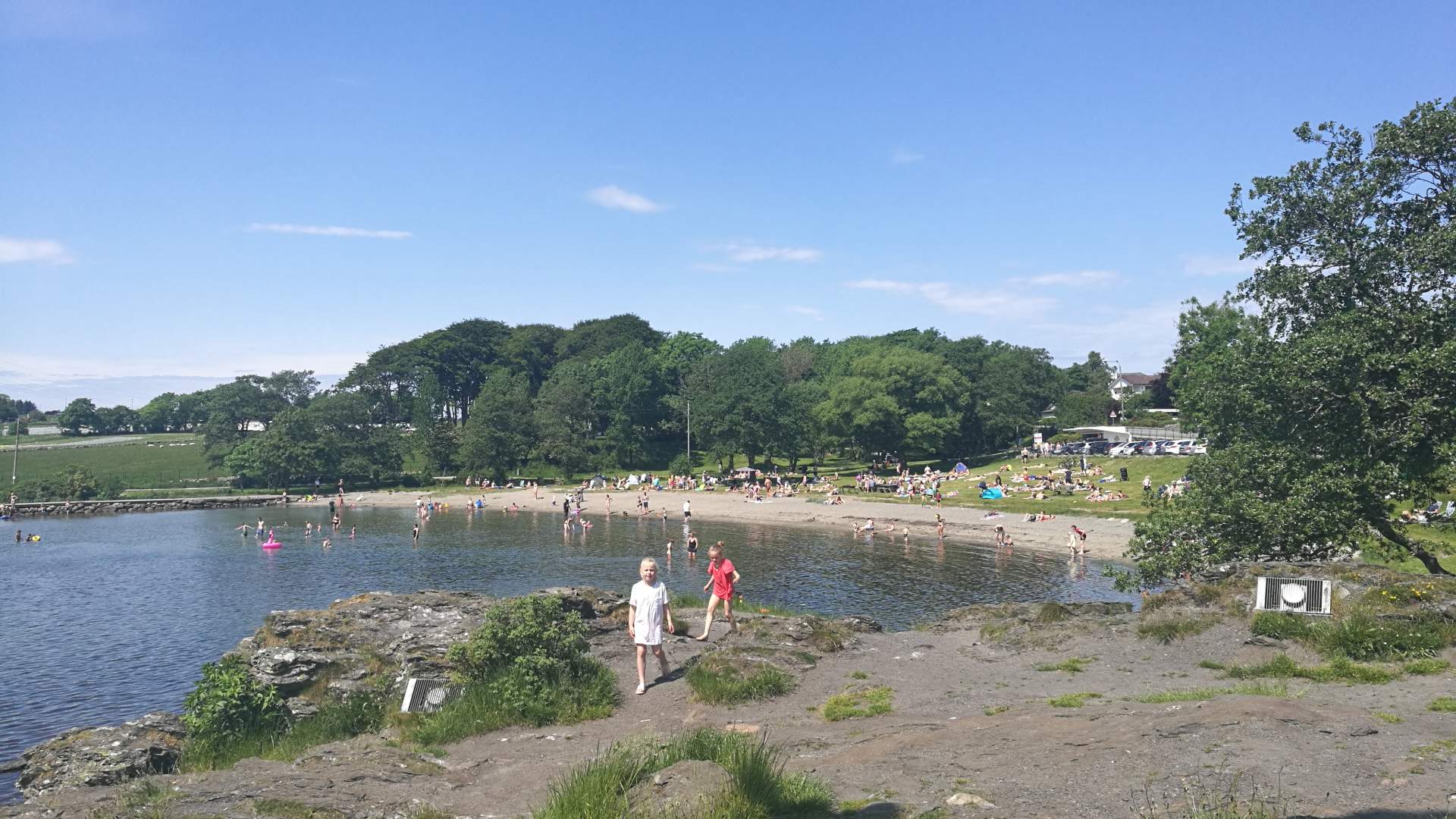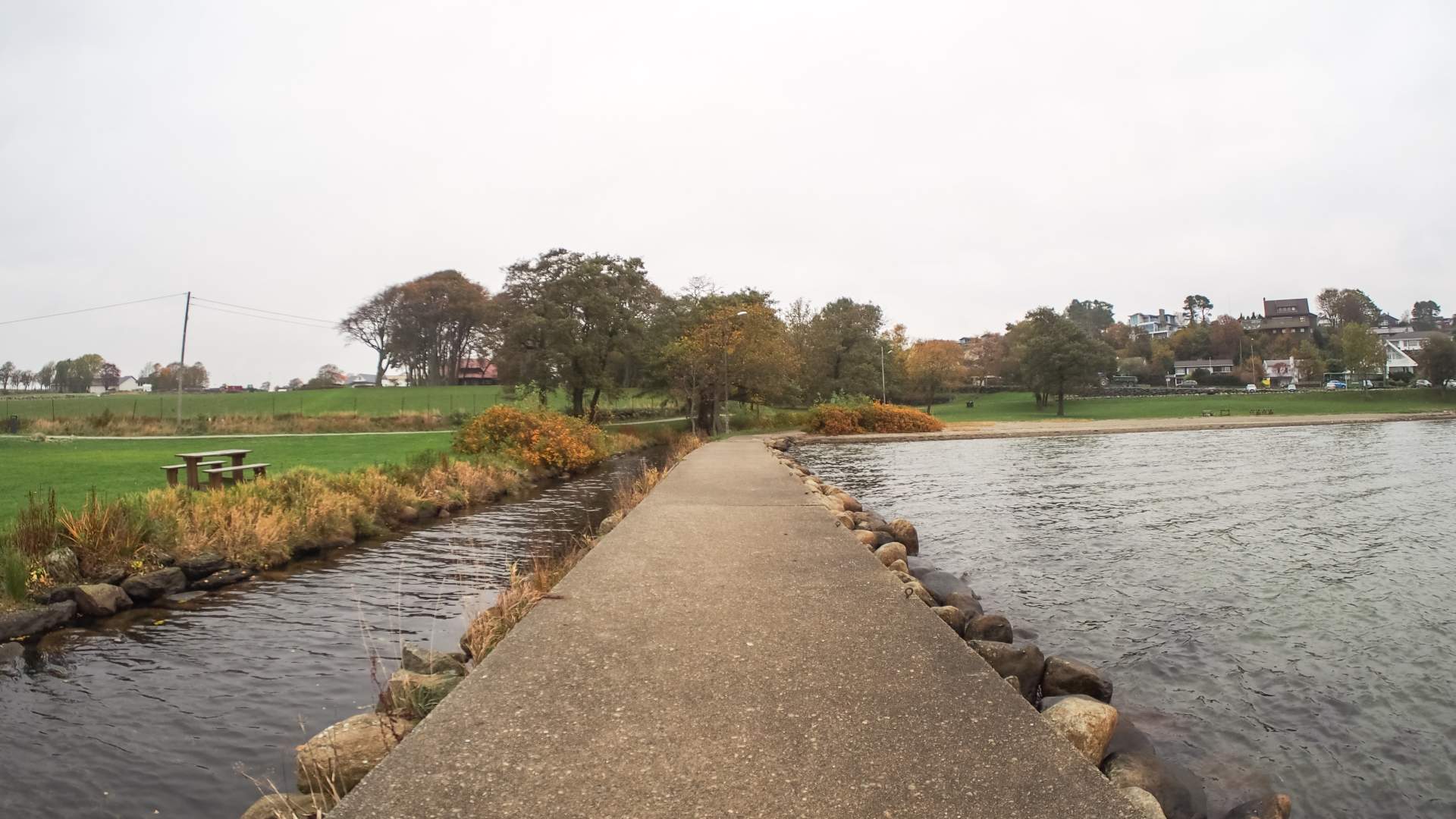Swords in rock





The Swords in Rock monument in Hafrsfjord, Stavanger marks the Viking battle of Hafrsfjord when Norway was united into one kingdom.
By Hafrsfjord, the monument Sverd i fjell (Swords in rock). This was where Harald Fairhair gathered Norway into one kingdom in 872. The monument consists of three swords that are fixed into the grown. They symbolise peace, unity and freedom. The hilts of the Viking swords are taken from swords found in different parts of the country. The monument is made by Fritz Røed (1928-2002), and was unveiled by King Olav in 1983.
History of the battle of HafrsfjordThe battle of Hafrsfjord has been described in the Saga of Harald Fairhair in Snorre Sturlason's Heimskringla (the best known of the Old Norse kings' sagas), and it is considered to be the most important battle that contributed to the gathering of West Norway and Norway into one country. Back then, Norway was run by several kings, and the battle was between Harald Fairhair and these other kings. The dating of the battle to 872 is not confirmed, and could just as easily have happened in the 880s. In Hafrsfjord, divers have long searched for possible remains from the battle, however nothing has been found so far. There are still strong indications that the battle took place in Hafrsfjord.
Fun fact about Harald FairhairThe love saga of Gyda and Harald Fairhair - according to the legend, as retold in the saga of Harald Fairhair, the reason he had for gathering Norway into one kingdom was allegedly that he desired to wed Gyda Eiriksdatter. Harald was in love with Gyda, the daughter of a king, and when he sent her men for her, she refused to come with them, because she did not find him sufficiently powerful. If he managed to be the sovereign of the entire Norway, she would have him. According to the saga, Harald Fairhair rose to the challenge, and he promised not to cut his hair before he had accomplished to unite Norway into one kingdom. The rest is as they say - history.
Hafrsfjord and MøllebuktaHafrsfjord is located in both Stavanger and Sola municipalities. The fjord is around 9 kilometres long and is a so-called threshold fjord. It has four thresholds and is deepest by the end of the fjord, which is only 3,5 metres deep. This means that deep-running boats cannot sail into the Hafrsfjord. You can cross the fjord in the north over the Hafrsfjord bridge, or you must drive around. If you arrive by plane at Stavanger International Airport, Sola, you often fly over the Hafrsfjord before landing. It is believed to have lived people here in this area long before the battle in 872. A petroglyph site has been found stemming from the Bronze Age, around 1800-500 BC. at Fluberget in Hestnes, and they have also discovered some bronze lurs in Revheimsmyra just nearby. The entire area around Hafrsfjord is rich in prehistoric artefacts.
Hiking/recreational area/bathingHafrsjord is a popular recreational area all year round. There is a lovely bike route and walking path along the fjord. During summer, Møllebukta in Hafrsfjord is a warm and cosy bathing area for the entire family. A large area of grass lawns, natural soil and beach. A stream from the lake Store Stokkavatn runs through the bathing area. A new and large parking place with access from Regimentveien was inaugurated in the Autumn 2020. There is a designated area for sailing boards. The popular hiking area Sørmarka is found not far away.
- All year
- Guest parking
- Family-friendly
Source: Region Stavanger
Swords in rock